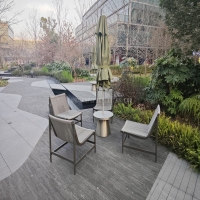Welcome to the website for landscape facilities products and knowledge.
How does the table’s design accommodate the needs of users with specific thermal preferences?
In today's diverse environments, from open-plan offices to cozy home setups, table design has evolved far beyond static surfaces. Modern tables now incorporate advanced thermal regulation technologies that directly address individual comfort needs. For users who prefer warmth, innovative heated table surfaces utilize low-voltage, energy-efficient elements embedded beneath durable materials like tempered glass or wood veneers. These systems often feature precise digital thermostats, allowing adjustments between 20°C to 40°C—perfect for those with circulatory issues or simply a preference for toasty workspaces. Conversely, cooling tables integrate discreet Peltier modules or micro-ventilation systems that dissipate heat, maintaining surfaces 5-10°C below ambient temperature. This proves invaluable for electronics-intensive work or warm climates. Some premium models even offer dual-zone configurations, dividing the table into distinct thermal regions to accommodate multiple users simultaneously. Materials play a crucial role; natural stone inserts provide passive cooling, while thermally reflective coatings minimize unwanted heat transfer. Smart integration takes this further, with tables learning user preferences through AI algorithms and automatically adjusting surface temperatures based on time of day or activity type. This personalized approach not only enhances physical comfort but significantly boosts productivity and well-being, proving that thoughtful thermal design transforms ordinary furniture into adaptive wellness tools.
Related search:

Recommendation
Metal structure rattan chair without armrests for single person, with woven seat and backrest.